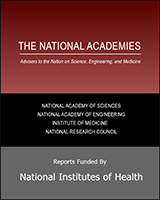NCBI Bookshelf. A service of the National Library of Medicine, National Institutes of Health.
Excerpt
The Hospital Preparedness Program (HPP) in HHS’s ASPR sponsored the workshop on medical surge capacity. HPP’s mission is to help prepare the nation’s healthcare system to respond appropriately to mass-casualty incidents, whether due to bioterrorism, natural disaster, or other public health emergencies. Ultimately, this effort comes down to preparedness and efficiency—health systems must develop a disaster medical capability that is rapid, flexible, sustainable, integrated, and coordinated, and that can deliver appropriate treatment in the most ethical manner with the resources and capabilities available. The workshop, held in Washington, DC, on June 10–11, 2009, featured presentations and discussions on the following topics, including the role of HPP in facilitating each of these efforts: Definitions of medical surge, standards, and metrics; Creating an integrated approach to an alternate care system, and establishing alternate care facilities; The capability and tools available to local, state, territorial, tribal, and federal government entities to provide situational awareness during operations, and to assess the current status of preparedness for medical surge operations; Strategies to facilitate public- and private-sector work to improve surge capability for victims and the distressed, including vulnerable populations; and Issues related to financing surge and preparedness.
Contents
- The National Academies
- Workshop Planning Committee
- Forum on Medical and Public Health Preparedness for Catastrophic Events
- Reviewers
- Workshop Summary: Introduction
- Goals and Objectives
- The Communications Challenge: Definitions, Standards, and Metrics
- Legal Authorities and Government Support
- An Integrated Approach to Alternate Care
- Establishing Alternate Care Facilities
- Creating Situational Awareness: A systems Approach
- At-Risk Populations: Behavioral Health Effects and Medical Needs
- Fatality Management Strategies
- Ramping Down and Recovery from a Mass-Casualty Incident
- Financing Surge Capacity and Preparedness
- Conclusions
- Appendixes
- A. References
- B. Agenda
- C. Registered Attendees
- D. Surge Medical Response Capability: What Is It? How Do We Get It? How Do We Know When We Have It?
- E. Alternate Care Systems: Stratification of Care
- F. Creating Situational Awareness: A Systems Approach
- G. Vulnerable Populations in Disasters: Health Effects and Needs
- H. Fatalities Management Strategies
- I. Financing Surge Capacity and Preparedness
Bruce M Altevogt, Clare Stroud, Lori Nadig, and Matthew Hougan, Rapporteurs.
Suggested citation:
IOM (Institute of Medicine). 2010. Medical surge capacity: Workshop summary. Washington, DC: The National Academies Press.
The views presented in this publication are those of the editors and attributing authors and do not necessarily reflect the view of the organizations or agencies that provided support for this project.
NOTICE: The project that is the subject of this report was approved by the Governing Board of the National Research Council, whose members are drawn from the councils of the National Academy of Sciences, the National Academy of Engineering, and the Institute of Medicine. The members of the committee responsible for the report were chosen for their special competences and with regard for appropriate balance.
- Assessing and Improving Hospital Mass-Casualty Preparedness: A No-Notice Exercise.[Prehosp Disaster Med. 2017]
- Healthcare coalitions: the new foundation for national healthcare preparedness and response for catastrophic health emergencies.[Biosecur Bioterror. 2009]
- Emergency Response to Radiological Releases: Have We Communicated Effectively to the First Responder Communities to Prepare Them to Safely Manage These Incidents?[Health Phys. 2018]
- Review Mass casualty management of a large-scale bioterrorist event: an epidemiological approach that shapes triage decisions.[Emerg Med Clin North Am. 2002]
- Review Surge Capacity of Hospitals in Emergencies and Disasters With a Preparedness Approach: A Systematic Review.[Disaster Med Public Health Pre...]

